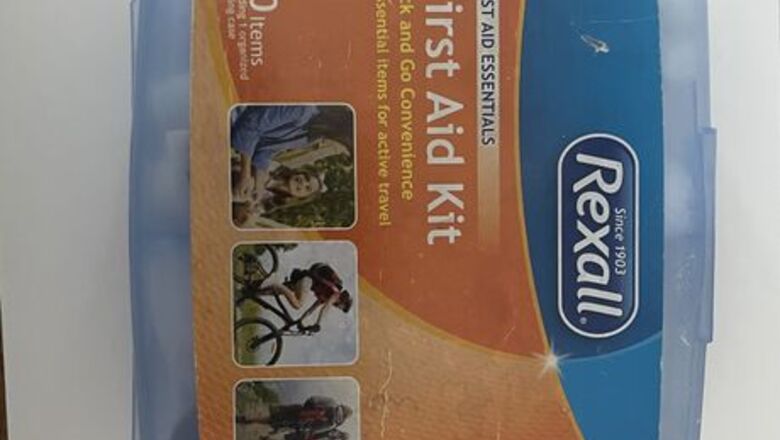
views
Initial Crime Scene Procedure
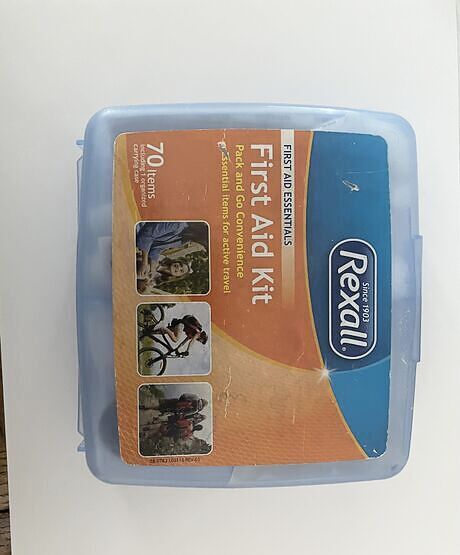
Make sure no one is in need of medical attention. Crime scenes are dangerous places where a perpetrator and victims might still be present when officials arrive. Safety is the number one concern when first arriving at a crime scene to ensure that everyone present is properly cared for and that if someone needs attention they can be saved.
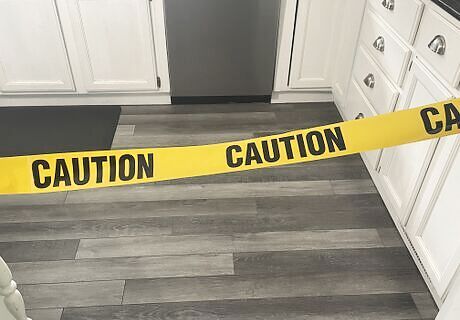
Tape off the crime scene. Taping the crime scene is a way to maintain security and validity of evidence since the tape will not allow people to go in and contaminate a scene. Making sure only one main entrance for authorized personnel is a good way to maintain effective security.

Put on PPE. Two main things to maintain at a crime scene is safety and validity of evidence. PPE allows personnel to go into the scene without contaminating evidence and protect the officials themselves from anything that can hurt them as well. The main PPE worn are gloves, masks, eye protection, shoe covers, and full body covers.

Take pictures of the whole scene. When taking pictures a picture of the entrance of the crime scene is needed. But when taking pictures of the whole scene, doing it in sections is most effective. Taking pictures in a panoramic way where each section is pictured across the area is the best way, one thing to keep in mind is that all pictures must overlap in a portion of the picture to ensure that no sections are missed.
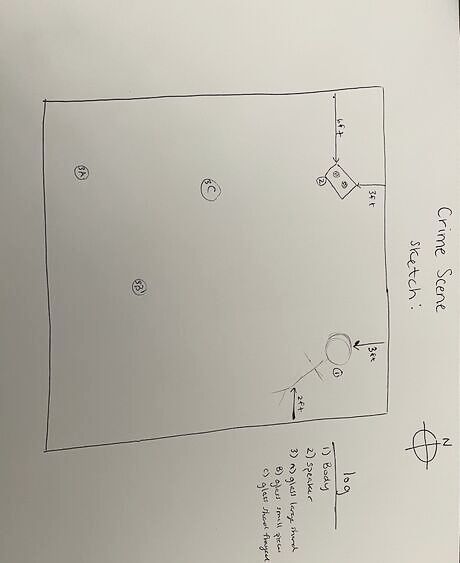
Sketch the crime scene. When at a crime scene a rough sketch is taken to get an idea of the full scene. When sketching make sure to highlight where north is in comparison to the scene. Also creating a set point where there is an immovable object in relation to another with measurements will give an idea of all other evidence in relation to that set point measurement. Another thing to remember is don’t forget to create a log of all evidence drawn with numbers just in case substitutions are used for the evidence drawings. However, a sketch must have the main big pieces of evidence drawn out.
Evidence Collection Procedures
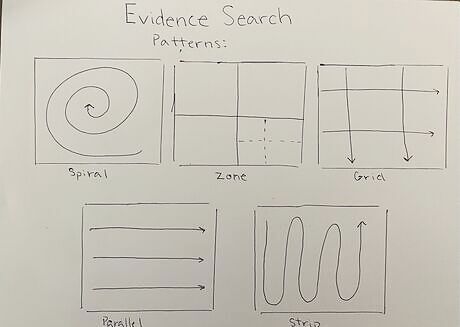
Search for evidence. Evidence at a crime scene is not always obviously shown. With this, searching for evidence is another big part of the process. Depending on the type of environment the scene is at and the amount of personnel present different types of search patterns are utilized. Some search patterns are the spiral, zone, grid, parallel, and strip search.
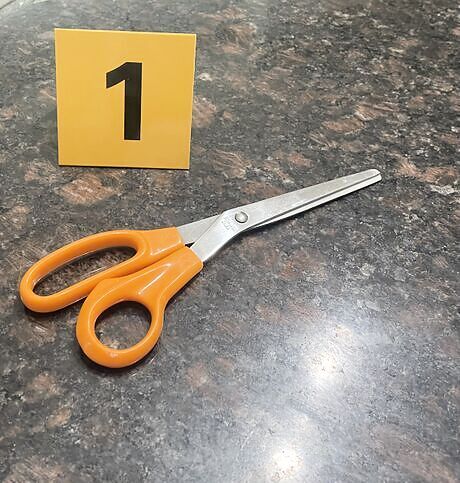
Number the evidence. When finding evidence, numbering it with flags and number tags is an effective way to keep track of evidence and log it effectively. When finding evidence a log of the number with a brief description of what it is or might be along with some characteristics can also be helpful to make a descriptive record.
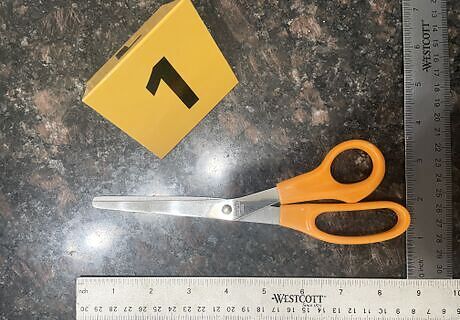
Take pictures of the evidence. When numbering evidence, taking a picture of the evidence is needed to complete the well rounded record for that piece of evidence. One thing to keep in mind is that evidence pictures should be taken directly above the object instead of at an angle as to not distort the object on the photo. Also making sure there is a measuring device in the picture along with the evidence number make sure to give the photo a reference to size and number for the log.

Collect evidence that needs to breathe. When at a crime scene there are pieces of evidence that need to be put into breathable containers such as paper bags and envelopes. Evidence that needs to breathe and or air out are items which are wet. Wet evidence needs to be in breathable packaging to inhibit contaminating the evidence with mold. Keep in mind that all evidence must be tagged with a case number and the name of the collector.
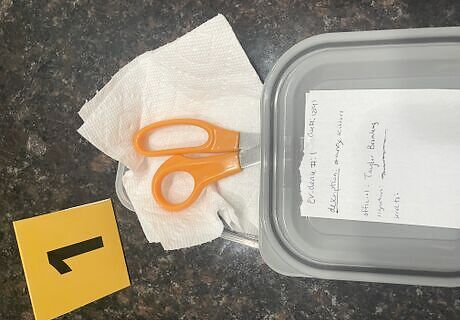
Collect evidence that does not need to breathe. Other types of evidence need to be put in airtight containers to avoid contamination. Hard evidence like weapons should be in taped closed containers. Debris should also be placed in containers as well. Non- breathable evidence should also be wrapped before being placed in a container to avoid any damage during transport. Evidence tags are also required for this evidence with a case number and the collectors name.
Final Analysis Procedures
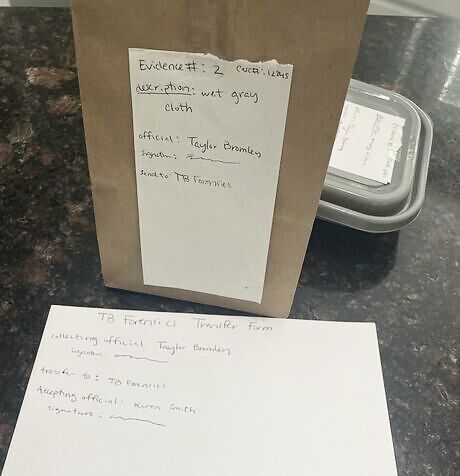
Send evidence to be analyzed. The main objective after collection is complete is to send the evidence to be analyzed for court. When sending evidence every object needs to be secured in sealed packaging and evidence tags need to be signed off and updated for every person who comes in contact with a piece of evidence. This is to maintain a chain of custody to try to prevent any type of loss of evidence or tampering.
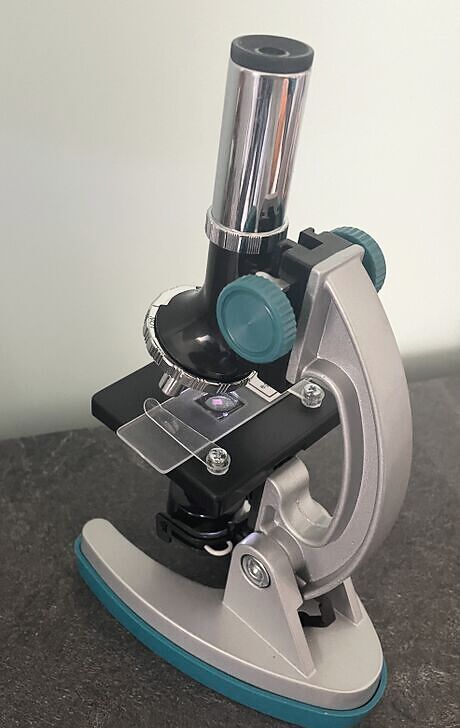
Analyze the evidence recieved. If you receive evidence analyzing it for court is a must. Depending on the type of evidence different kinds of techniques and machines are used. DNA, Microscopes, NMR, IR, etc. are the many ways evidence is analyzed. Remember when analyzing PPE is also required to prevent contamination.














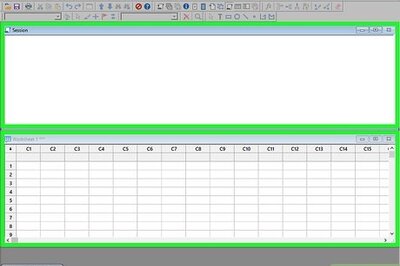

Comments
0 comment